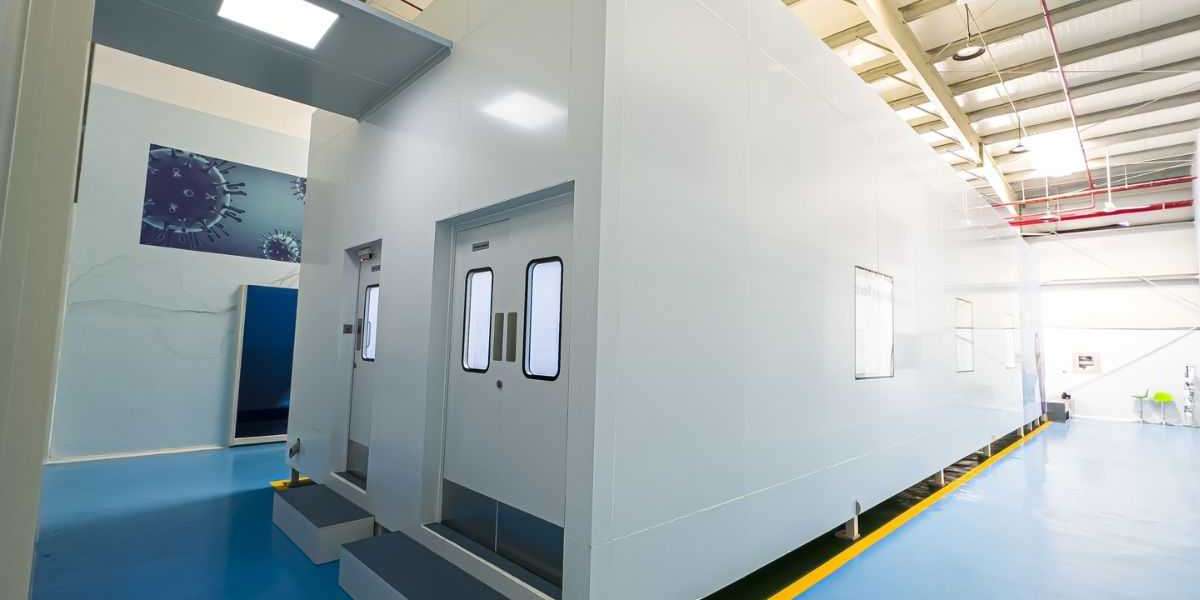In today's rapidly advancing industries, maintaining contamination-free environments is paramount. Portable modular cleanrooms have emerged as a versatile and efficient solution, offering flexibility, scalability, and cost-effectiveness. This article delves into the intricacies of portable modular cleanrooms, exploring their design, benefits, applications, and considerations for implementation.
Understanding Portable Modular Cleanrooms
Portable, modular cleanrooms are prefabricated, self-contained environments designed to meet specific cleanliness standards. Their modular construction allows for easy assembly, disassembly, and relocation, making them ideal for industries with evolving needs. These cleanrooms can be customized to achieve various ISO classifications, ensuring the appropriate level of contamination control for diverse applications.
Key Features of Portable Modular Cleanrooms
- Modular Design: The modularity of these cleanrooms facilitates rapid deployment and reconfiguration. Components are prefabricated, ensuring consistency in quality and reducing on-site construction time.
- Flexibility: Their design allows for easy expansion or reduction in size, accommodating changing operational requirements without significant structural modifications.
- Mobility: Being portable, these cleanrooms can be relocated as needed, supporting dynamic workflows and multiple project sites.
- Cost-Effectiveness: The prefabrication process and reduced installation time lead to lower initial costs compared to traditional cleanrooms. Additionally, their energy-efficient systems contribute to reduced operational expenses.
- Compliance: Portable, modular cleanrooms can be designed to meet stringent industry standards, including ISO 14644-1:2015, ensuring appropriate contamination control levels.
Types of Portable Modular Cleanrooms
- Softwall Cleanrooms: Constructed using clear vinyl curtains attached to a modular frame, softwall cleanrooms offer an economical solution for less stringent cleanliness requirements. They are lightweight and can be easily expanded or reconfigured.
- Hardwall Cleanrooms: Featuring rigid panels made from materials like stainless steel or aluminium, hardwall cleanrooms provide superior environmental control and durability. They are suitable for applications requiring higher cleanliness levels and can support higher internal pressures.
Advantages Of Traditional Cleanrooms
- Rapid Deployment: The prefabricated nature of modular cleanrooms allows for quicker installation compared to traditional construction methods.
- Scalability: As operational needs change, modular cleanrooms can be easily expanded or downsized, providing unmatched scalability.
- Reduced Downtime: The ability to assemble and commission these cleanrooms swiftly minimizes operational disruptions.
- Environmental Control: Advanced filtration and airflow systems ensure precise control over environmental parameters, maintaining the desired cleanliness levels.
Applications of Portable Modular Cleanrooms
Portable, modular cleanrooms are utilized across various industries, including:
- Pharmaceuticals: For compounding, packaging, and research activities requiring controlled environments.
- Biotechnology: Supporting research and development processes that demand stringent contamination control.
- Electronics: Providing dust-free environments essential for the assembly and testing of sensitive electronic components.
- Aerospace: Ensuring contaminant-free conditions for the manufacturing and maintenance of aerospace components.
- Medical Devices: Facilitating the production of sterile medical equipment and devices.
Considerations for Implementation
When planning to implement a portable, modular cleanroom, consider the following:
- Cleanliness Classification: Determine the required ISO classification based on your specific application to ensure appropriate contamination control.
- Space Requirements: Assess the available space and plan for potential future expansions to ensure the cleanroom can accommodate evolving needs.
- Environmental Controls: Ensure the cleanroom is equipped with appropriate HVAC systems, filtration units, and monitoring devices to maintain the desired environmental conditions.
- Compliance: Verify that the cleanroom design and construction comply with relevant industry standards and regulations.
- Supplier Expertise: Partner with reputable suppliers who have a proven track record in delivering high-quality modular cleanroom solutions.
Conclusion
Portable, modular cleanrooms represent a significant advancement in contamination control solutions, offering unparalleled flexibility, efficiency, and scalability. Their modular design and portability make them an ideal choice for industries requiring adaptable and reliable clean environments. By carefully considering the specific requirements and partnering with experienced suppliers, organizations can effectively implement modular cleanrooms to meet their operational needs.








